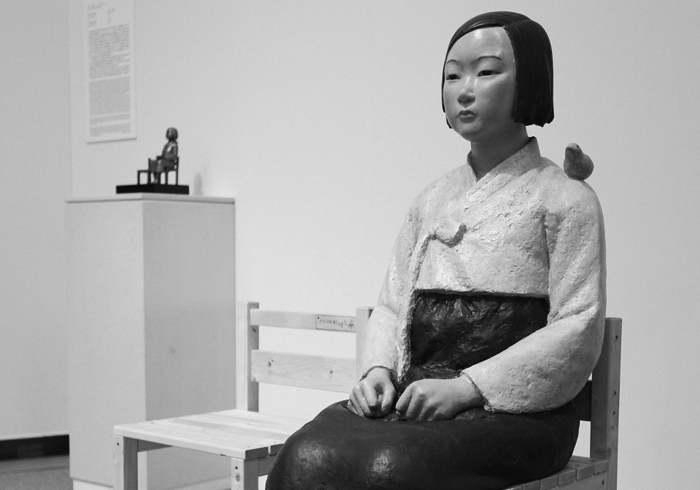Exhibiting artists at the 2019 Aichi Triennale have issued a letter demanding that their work be removed from the exhibition until the organising committee reopens an exhibition that was censored earlier this month. On 3 August, the exhibition After ‘Freedom of Expression’? (which, ironically, traced the history of censored artwork in Japan) was shut down only three days after its opening at the Aichi Prefecture Museum of Art in Nagoya, over its inclusion of a sculpture of a ‘comfort woman’. The controversial sculpture, Statue of a Girl of Peace by Korean artists Kim Seo-kyung and Kim Eun-sung, makes reference to the Korean women who were sexually enslaved by the Japanese Imperial Army during the Second World War, euphemistically called ‘comfort women’ – an issue, the letter notes, ‘that is continuously repressed in Japan’. Signed by, among others, Tania Bruguera, Javier Téllez, Pia Camil, Park Chan-kyong, Dora García, Ugo Rondinone and Pedro Reyes, the letter calls on the triennale’s responsibility as ‘a cultural institution’ to ‘stand by the rights of its exhibiting artists and to protect freedom of expression’.
While the triennale organisers cited safety concerns for closing the show, after receiving a flurry of anonymous threats and complaints, press outlets, including The Japan Times, pointed to political pressure. Mayor of Nagoya Takashi Kawamura was reported to publicly demanding the removal of the statue, claiming it ‘tramples on Japanese people’s feelings’.
The letter follows a previous statement signed by over 80 participating artists and published on Facebook, in which they demanded the show be reopened under safety scrutiny, while arguing for mediation and a public assembly to debate the situation. While the organisers are said to have complied with the request for an open discussion with the artists, they ’have not been given any clarity as to whether the censored section will be reopened… Therefore, we demand that the organizers temporarily suspend the exhibition of our artworks in the Triennale while “After Freedom of Expression?” remains closed to the public’.
Depicting a teenage girl sat on a chair, with clenched fists and a bird on her shoulder, the original version of the disputed statue was made in 2011 to mark the 1,000th Wednesday demonstration in front of the Japanese embassy in Seoul, demanding a sincere apology and compensation from the Japanese government for the surviving victims and their descendants. Since then, other versions of the statue have been placed around the country and internationally, including at the Tokyo Metropolitan Art Museum where a member of staff destroyed a miniature version of the work, claiming it violated the museum’s policies.
Tensions around the subject of comfort women have escalated amid strained diplomatic relations between Japan’s rightwing Prime Minister Shinzo Abe, who refused to renew an apology to the victims, and South Korea’s leftwing government. In 2015, former Korean Prime Minister Park Geun-hye agreed for a foundation to be set up for the victims which would be funded by Japan, a settlement which was widely decried as unsatisfactory. On 5 July of this year, South Korea officially dissolved the US$8.8 million foundation amid ongoing disputes over reconciliation.
16 August 2019
